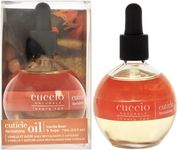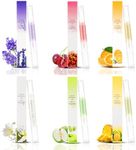Buying Guide for the Best Cuticle Creams
Choosing the right cuticle cream can make a big difference in the health and appearance of your nails and cuticles. The best approach is to think about your specific needs, such as how dry or damaged your cuticles are, how often you want to apply the product, and whether you have any sensitivities to certain ingredients. Understanding the key features of cuticle creams will help you make a choice that keeps your nails looking their best and your skin feeling comfortable.IngredientsIngredients are the substances that make up the cuticle cream, and they are important because they determine how well the product will moisturize, heal, and protect your cuticles. Some creams use natural oils and butters like shea butter, coconut oil, or jojoba oil, which are great for deep hydration and are usually gentle on the skin. Others may include vitamins like vitamin E or B5, which help repair and strengthen the skin. If you have sensitive skin, look for creams without artificial fragrances or harsh chemicals. To pick the right one, think about whether you prefer natural products, need extra healing power, or want something lightweight for daily use.
Texture and AbsorptionTexture refers to how thick or light the cream feels, and absorption is about how quickly it soaks into your skin. This matters because a thick, rich cream can provide intense moisture for very dry or cracked cuticles, but it might feel greasy or take longer to absorb. Lighter creams or lotions are easier to use during the day and won’t leave your fingers feeling sticky. If you need deep repair, go for a thicker cream, especially for overnight use. For quick daytime application, a lighter, fast-absorbing formula is best.
ScentScent is the fragrance of the cuticle cream, and it can affect your overall experience. Some creams have a strong floral or fruity scent, while others are unscented or have a mild, natural smell. If you are sensitive to smells or plan to use the cream often, you might prefer an unscented or lightly scented option. If you enjoy a pleasant aroma, choose a scent you like, but make sure it doesn’t irritate your skin.
PackagingPackaging refers to how the cuticle cream is stored and dispensed, such as in a jar, tube, or stick. This is important for convenience and hygiene. Jars allow you to scoop out as much as you need, but you have to use clean hands. Tubes and sticks are more portable and hygienic, making them great for on-the-go use. If you want something for your bedside table, a jar might be fine, but for your purse or travel, a tube or stick is more practical.
Purpose (Moisturizing vs. Healing)Some cuticle creams are designed mainly to moisturize and keep your cuticles soft, while others focus on healing cracked, damaged, or inflamed skin. Moisturizing creams are good for daily maintenance and prevention, while healing creams often contain extra ingredients like antiseptics or stronger vitamins for repair. If your cuticles are generally healthy, a basic moisturizer is enough. If you have problems like peeling, cracking, or soreness, look for a cream with healing properties.

















